Exciting times! After years of dreaming I have finally fulfilled my lifelong goal of writing a book.
I introduce you to Make a Living Designing Logos.
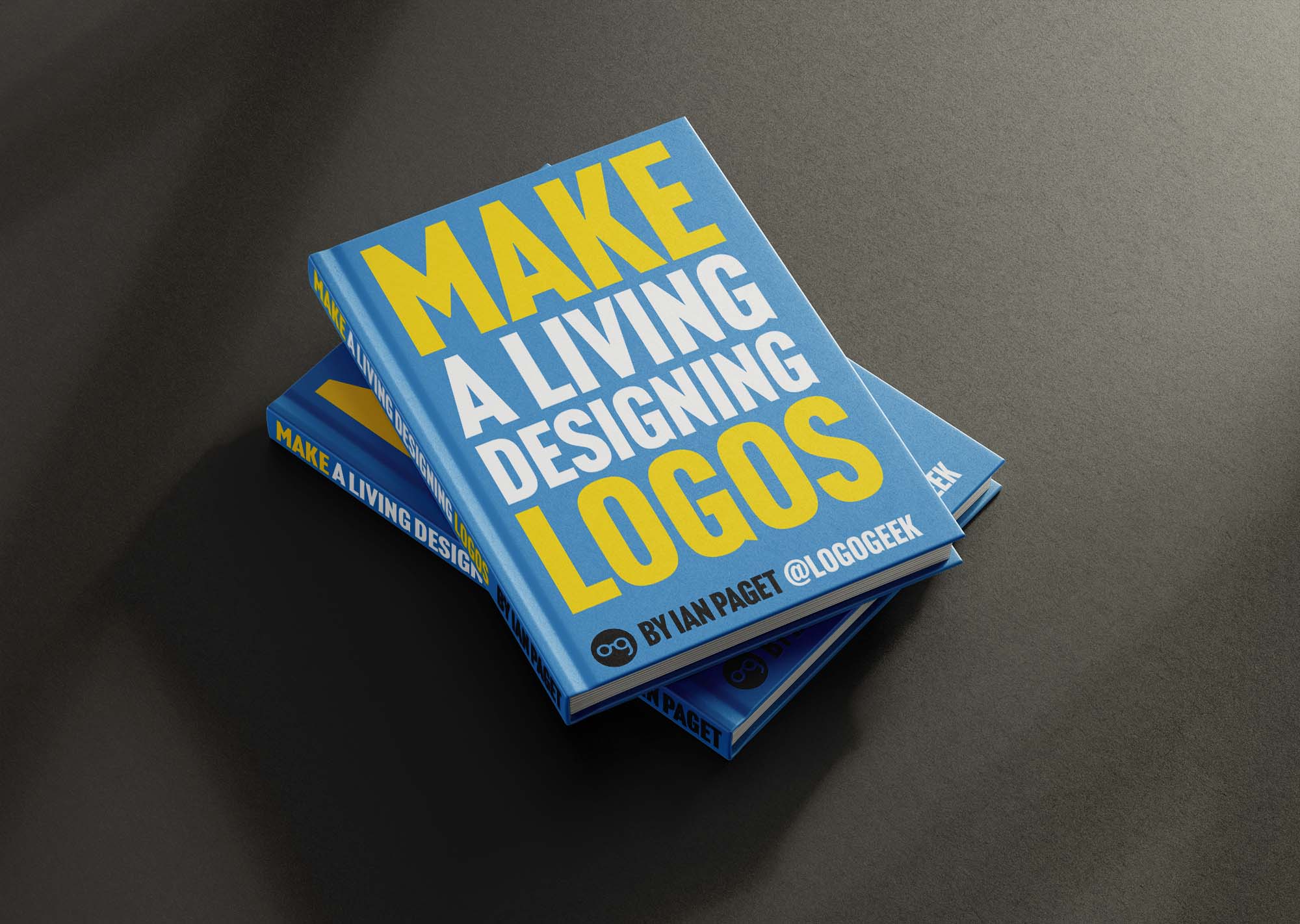
To launch with a bang, and to share the best possible version with the people that want to support my goals, I’ve launched a Kickstarter Campaign that will allow me to bulk order deluxe copies from a reputable print company.
This has been a dream for almost half my life, and since I see so many designers with a similar goal, I thought it worth writing a blog post to share a little behind the scenes that went into creating my first design book.
It Started With an Idea
Way back when I was at college I decided I wanted to create a book.
At that point, it was an epic science fiction on the lines of Lord of the Rings and Star Wars, and I was more interested in creating epic illustrations for it.
I spent hours sketching and drawing ideas, but always knew the story was far too big and complicated for me to write at that time in my life, and it didn’t help that writing wasn’t my strongest skillset. But I still dreamed of writing a book.
Fast forward a few years and I started Logo Geek. I became obsessed with logo design, so read book after book on the topic. I read and shared everything I could find on the topic.
With everything I read I discovered something new, and started to think how great it would be if a single book existed that shared everything I was learning, all in one book… a bible for logo design… The Ultimate Guide to Logo Design. I dreamed of creating this book!
The concept evolved over time, but the seeds were sown.
Planning the Book With Post It Notes
Around that same time I was obsessed with everything Pat Flynn released.
When writing his first book, he was kind enough to share some of the behind the scenes techniques he used.
He shared a great idea for planning using Post It Notes which I found immensely useful.
When you want to write a book your head is full of ideas for what could be included. Using Post It Notes allows you to quickly get all those ideas out of your head.
It’s a simple concept… take a Post It Note, then write down a word or phrase related to a topic that you want to include in your book. So for my book, this included things like “what is a logo”, “design process”, “logo files”, “colour theory” etc.
You just keep going until you have all the ideas out of your head. You can then start to group the Post It Notes into related topics, which will help you to structure the contents and create a high-level plan for the chapters of your book.
Below is a photo of the Post It Notes I pulled together. Originally they were pinned up on a cork notice board, but I eventually moved them to A4 sheets of paper which I kept in a folder. You can see I ended up using a colour coding system. Pink for the chapters, yellow for topics within the chapters, and then green for areas that other designers could contribute to.
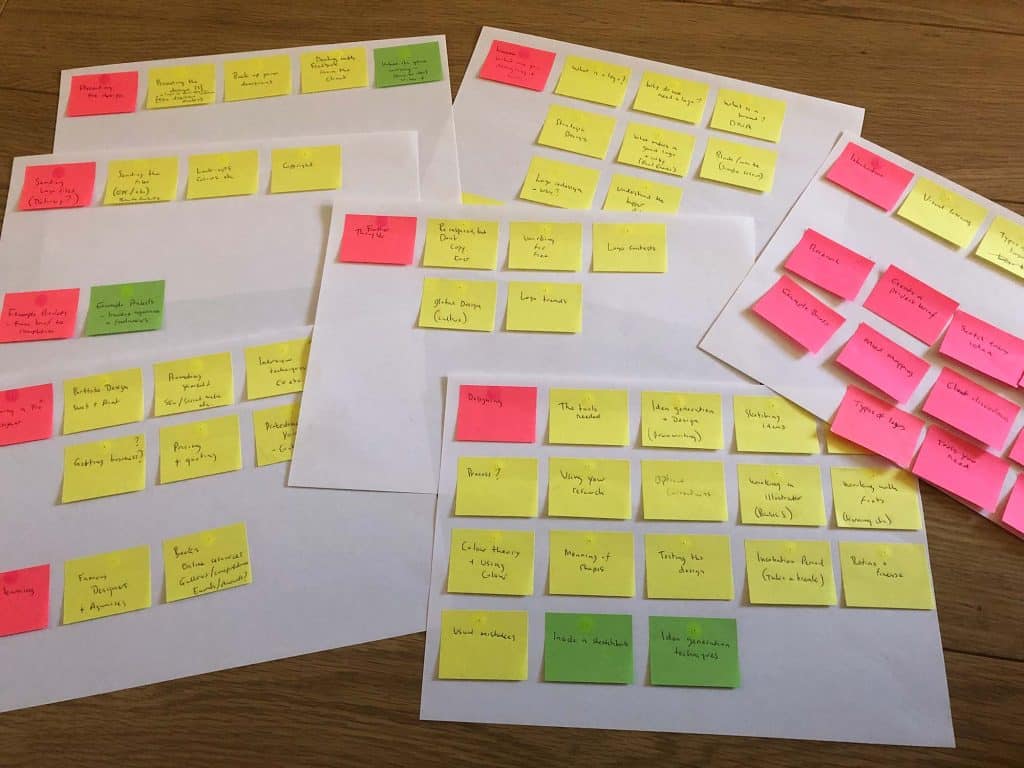
I had a plan, and now needed to write.
Writing Blogs to Contribute to the Book
To build authority and to rank well on search engines, you need to write.
So to kill two birds with one stone I started to write blogs based on my book plan.
I thought that if I focused on writing blogs, then eventually I could pull them together in one book.
Here’s a few examples:
The Tools Needed to be a Logo Designer
A Guide to Generating Logo Design Ideas
A Designers Guide to Creating Logo Files
A Logo Designers Boxset
As my social following started to grow, so did the opportunity to generate an income through affiliate marketing.
I had been fairly successful promoting Design Cuts bundles, and in the process became friends with Tom Ross, the CEO of the company.
He was kind enough to offer coaching to help grow my email list that would be mutually beneficial to both of us.
As part of his advice, he suggested to create a lead magnet so great that it shouldn’t be free… something so incredible that people would be happy to hand over their email address to get their hands on it.
By that time I had written up a decent collection of blogs – not enough to become a book, but enough to build a collection of eBooks that people would find useful.
I took the best of my blogs, created a lot of new content too, and eventually created 6 valuable ebooks that have been download now tens of thousands of times, which I named “The Logo Designers Boxset“.
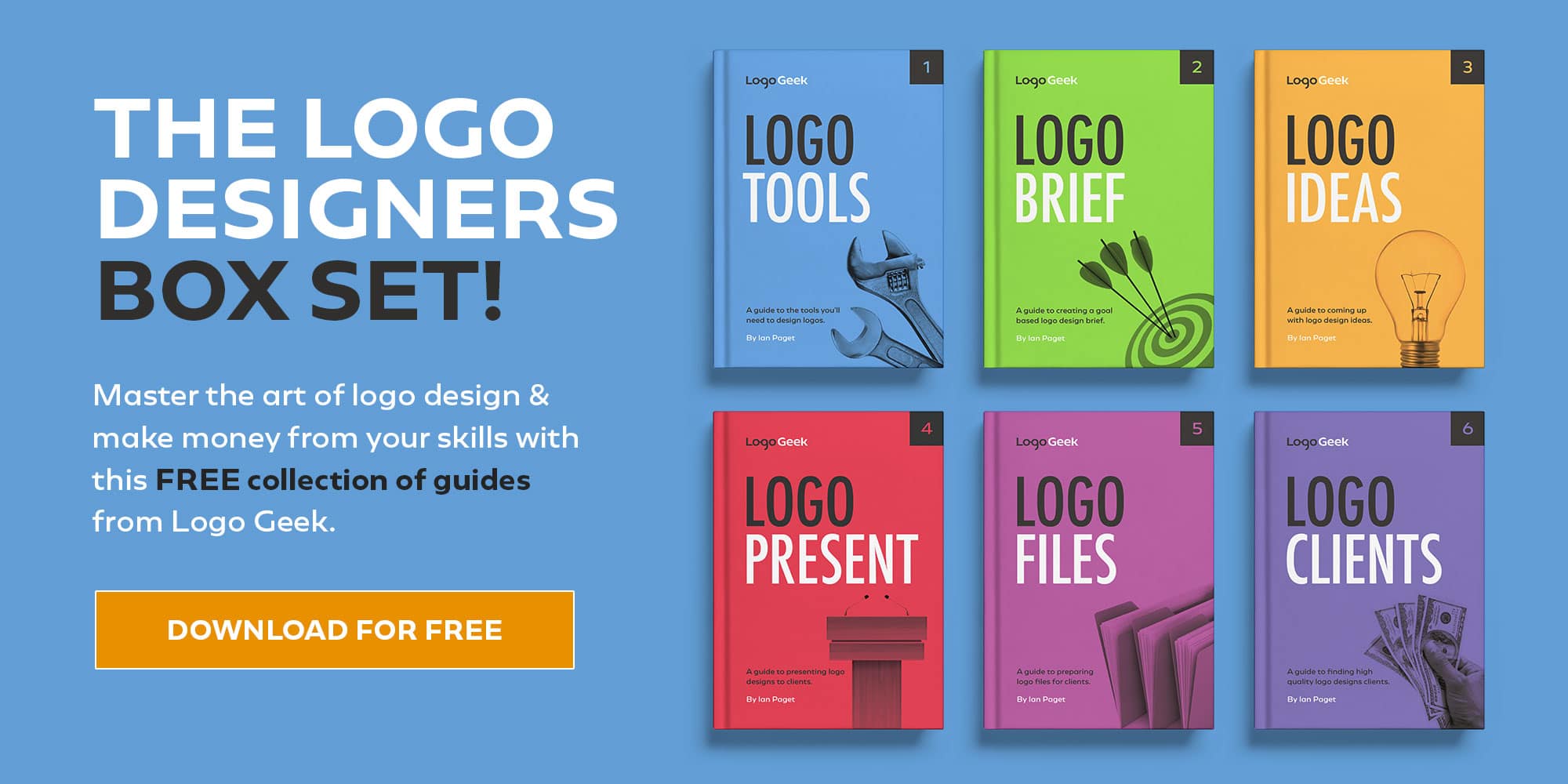
Reality Check: Books Need a Lot of Content
Several years had passed by this point, and it started to sink in that writing a book was not going to happen any time soon…
I can’t remember where I heard it, but someone at one point mentioned that a thin book is around 50,000 words.
50,000 is a lot of words. You’d have to write 1000 words a week for an entire year to write enough content for a book.
This was going to be a lot of work. Was I even up to the task?
To be up to the task of writing a book I needed to get my act in gear.
Clarity & Focus
By this point in my life I had developed Logo Geek to the point where I was able to hand in my notice in my day job so I could focus my energy on building my own business.
The book idea had also developed from something that was just a dream to something I felt I needed to work on to establish myself as an expert on the topic.
So I needed to crack on and take it a lot more seriously.
I had also become concerned that the book idea I had wasn’t particularly original.
My bookshelf is full of logo design books, so writing another book about logo design process almost felt like a pointless pursuit, as it had been done so many times already.
I felt I needed to do something different.
As I was writing… a new idea started to form.
What originally started out as a ‘Logo Design Bible’ developed into something much more personal to me.
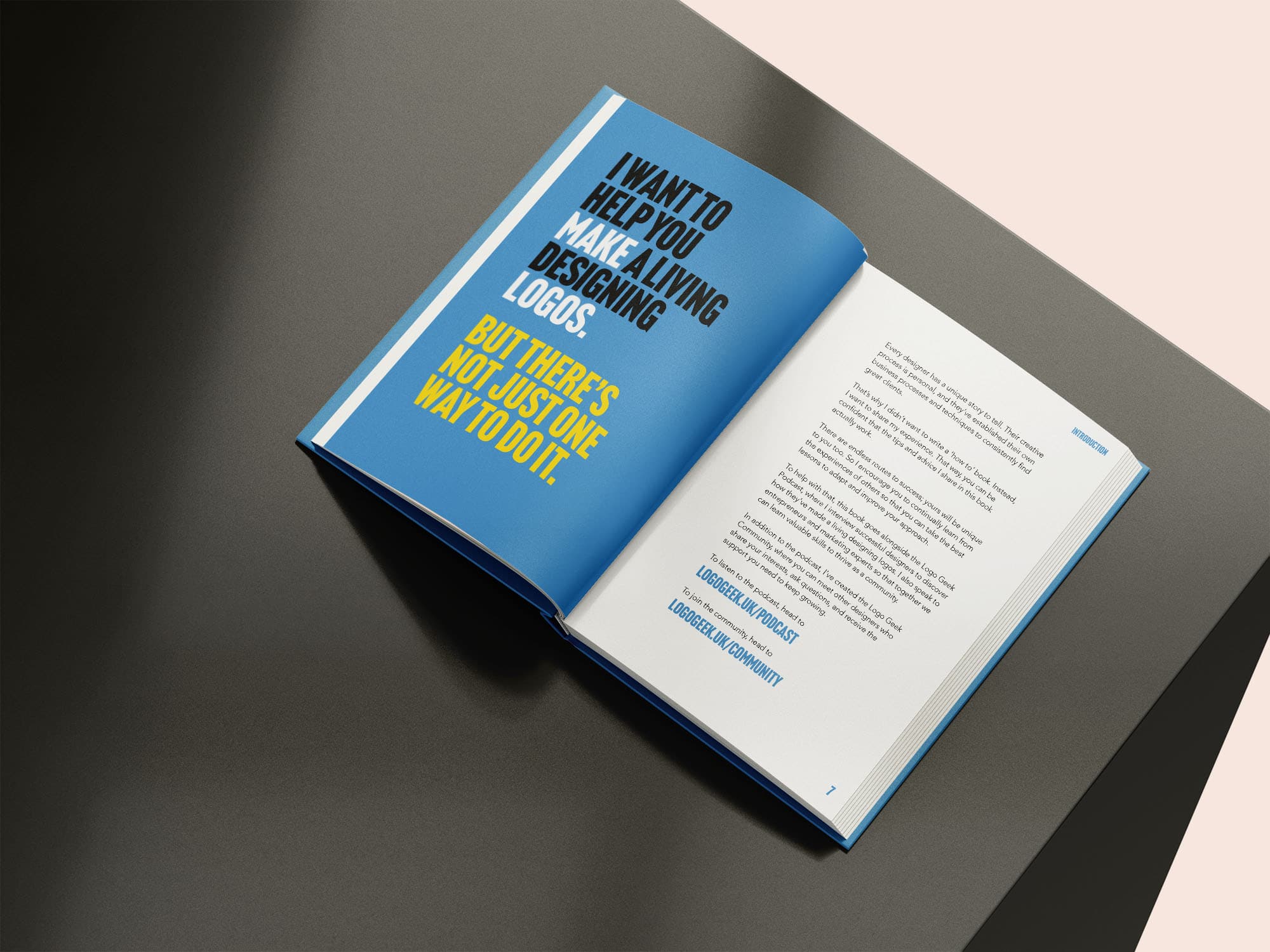
I really struggled to write an informative “how to” book, so I started to simply write what I do, what I’ve learned, and what’s worked for me, and by doing this the writing just started to flow.
By writing something more personal, not only was it easier for me to write, I realised I was creating a more valuable and useful book in the process – suddenly it went from being a book that almost anyone could write, to being something very original, unique, and something only I could write.
The idea developed into one where I would share how I’ve built a career, and made a living designing logos – a topic that could also pull together everything I had previously built too, from my blog, to podcast, to community and any future products I develop too.
This became my goal and mission. To help others Make a Living Designing Logos too!
It was something the world needed, and only I could write it.
A Daily Routine & Accountability
In order to write this book I had to take it seriously. I needed to write daily, so I made it a personal goal to write 250 words a day.
I did my client work in the day, would make the family dinner, spend time with my daughter and put her to bed, and then afterwards, I’d sit at my desk with the goal of writing.
I was almost always extremely tired by this point, but just sitting there, with a blank document open on my desktop, I managed to write, and by pushing myself to do it daily, it became a routine.
Some days it was easy, and I got into a real flow so would write the whole evening. Some other days I’d really struggle, so I’d write a few paragraphs and then relaxed the rest of the evening.
The goal was to simply make progress daily, so as long as I did even a little, eventually the task would be complete.
I also wanted accountability, so I shared with friends and family through social media that I was working on a book, and updated everyone on my progress.
The First Draft: A Brain Dump
The first draft of the book was treated as a pure brain dump.
I just wrote and wrote and wrote.
I didn’t edit, rework anything, or worry about how it was written. The goal was simply to write.
I needed to get all of the ideas out of my head and on paper, and it didn’t matter how sloppy it was… I just needed to dump everything out of my head onto paper.
This made it easier to write quickly, and to make progress with my daily goal.
It didn’t matter if I was half asleep or not – I just needed to make progress daily.
Writing in this way daily, I managed to throw together a first draft in just over a month. Sure it was badly written, and it needed a substantial amount of work still, but I had got all my initial thoughts and ideas on paper
Now I needed to re-work it all.
Rewrite, Rewrite, Rewrite
Starting from the very beginning I sat to re-work the content, continuing my daily routine.
This was harder than simply throwing down ideas, but I also wasn’t starting from a blank slate. I knew what I needed to say, so just needed say everything in a better way.
Some nights it was hell and I spent far too long just editing one sentence. Other nights I flew through several pages. It was hard work, but kept making progress every day.
In some cases I noticed I repeated things, so needed to take things out, or move things to different parts of the book. Things were really starting to take shape.
After hacking away for several weeks I eventually got to the end of the book once again, but had new ideas for sections I felt the book needed to make it flow better.
I decided to leave those new parts since I was excited with my progress, so I found an editor online to improve on what I had written so far. Then in the background I would work on the final sections, which I honestly thought would be easy.
But I really struggled with these new sections.
I don’t know if this was because of exhaustion, having pushed so hard for several months, or something else, but those last sections felt far more complicated to write than the rest of the book.
Although I did my daily routine, it really started to feel like an absolute chore.
So I ignored those sections… and started to think about the exciting parts, such as the design of the book.
Life Got in the Way
My ex partner and I decided we wanted to move that year.
It was the first year with our daughter, and we both wanted to bring her up in a nicer area, so it seemed only right to put the house on the market as soon as possible since it can take time to find a buyer and go through the process of selling a property.
I knew my neighbours sister was interested in the house, as she’d casually mentioned it more than once, so we mentioned to our neighbour that I was considering selling the house.
Unbelievably our potential buyer was on the doorstep shortly after to look around… in her mask and gloves (it was Covid lockdowns).
The day after, which was a day after making the decision to move and sell the house, she made an offer and I accepted it.
I thought I could finish the book before moving, assuming it would take several months to even get an offer, but suddenly we needed to find new place to move to, to pack everything up… so my focus was diverted.
The book was put on pause.
We moved, and sadly life then went from bad to worse.
I won’t go into details here, as it’s a long messy story, but shortly after moving I hurt my back, my car packed in, our relationship collapsed, and then I ended up going through a horrific experience involving the family court system, fighting for access to the daughter that I had put to bed daily for the previous 2 1/2 years and loved dearly.
I needed to even sell the house to pay for legal fees… it… was… horrid, I lost everything I had worked hard for, but I’m glad I’m out the other end of that hell.
I Didn’t Want to Work on the Book
By that point I finished around 80% of the book, but with my focus on my daughter and staying sane, I simply didn’t want to work on the book.
I actually didn’t want to do a lot of anything.
I just wanted to lay in bed all day and cry, which is what I did most days.
People would ask about the book, but I didn’t care. My focus was elsewhere. I had got the idea of writing a book out of my system.
I had wrote the book and did what I wanted to. I didn’t really care too much that nobody else had seen it. I knew I wrote a book and that’s all that mattered. At least that’s what I was telling myself at the time.
A print out was sat staring at me throughout that whole time – a duration of nearly 2 years – and being honest, the thought of caring on with it just made me feel miserable. I was sick of seeing it, and came close many times to throwing it in the bin.
Counselling, Therapy & Recovery
I went through a horrific experience – one I wouldn’t wish even on my greatest enemies – and it’s still something I’m dealing with, but I got help to work through it.
The family court experience lasted for more than a year, and it consumed every aspect of my mind body and soul. Thankfully it eventually came to a closure, and I won the best outcome for my daughter – 50% custody.
I used therapy throughout the experience, and then counselling at the end of the experience to process the horror of what went through, with the goal to move on and build a new life for me and my daughter. A new beginning.
Although I never once mentioned my book to my therapist, for some reason, after having several sessions, I decided to pick up the printed copy sat one my desk, printing the missing pages, with the goal of reading through it all and carrying on with it.
I’m not sure if it was the therapy, or because I had began to mention it to people again, or simply due to having the headspace once again to focus – likely a combination of all 3 – but I got back to the book, and wanted to continue working on it.
I still felt negative about it at first, but after stapling the book up into bitesized chunks, I started to read a section a day, and something wonderful happened… after almost 2 years of not working on the book… not even wanting to look at it… I had started to feel excited about it again.
Not only did I feel excited, but I also started to see ways to integrate the sections I had struggled to write into the rest of the book, negating the need for new chapters. I started to see ways that I could finish it off and make it better.
I was buzzing with excitement.
I got back to working on the book a little bit each day, and things quickly starter to fall into place.
The Final Push
I was on a mission!
I felt like I was so close to finishing the book and I pushed forward.
I was juggling parenting time with work, so barely any time to work on a personal project, but I did weeks of late nights… hacking away at 11pm some nights until the early hours of the morning.
I needed to finish it.
I so desperately wanted to finish it.
Some days it was exciting, some days it was a chore… but I hacked away, as it was so close to being done.
I got to a point where I felt I needed just 1 more day… then after 1 day there was still work left to do… So maybe one more day?
So I parked everything, and did just that. I focussed on the book for a whole day. I woke up early, and wrote all day… from 9am to midnight.
Then the day ended and I needed to continue…
It was a CHORE, but the end was in sight.
I continued the following day, and I did it! Perseverance paid off… the moment I finally wrote that last paragraph I wanted to cry with joy!
I DID IT! I FINISHED IT!
At least finished a version I was ready to share with others for feedback.
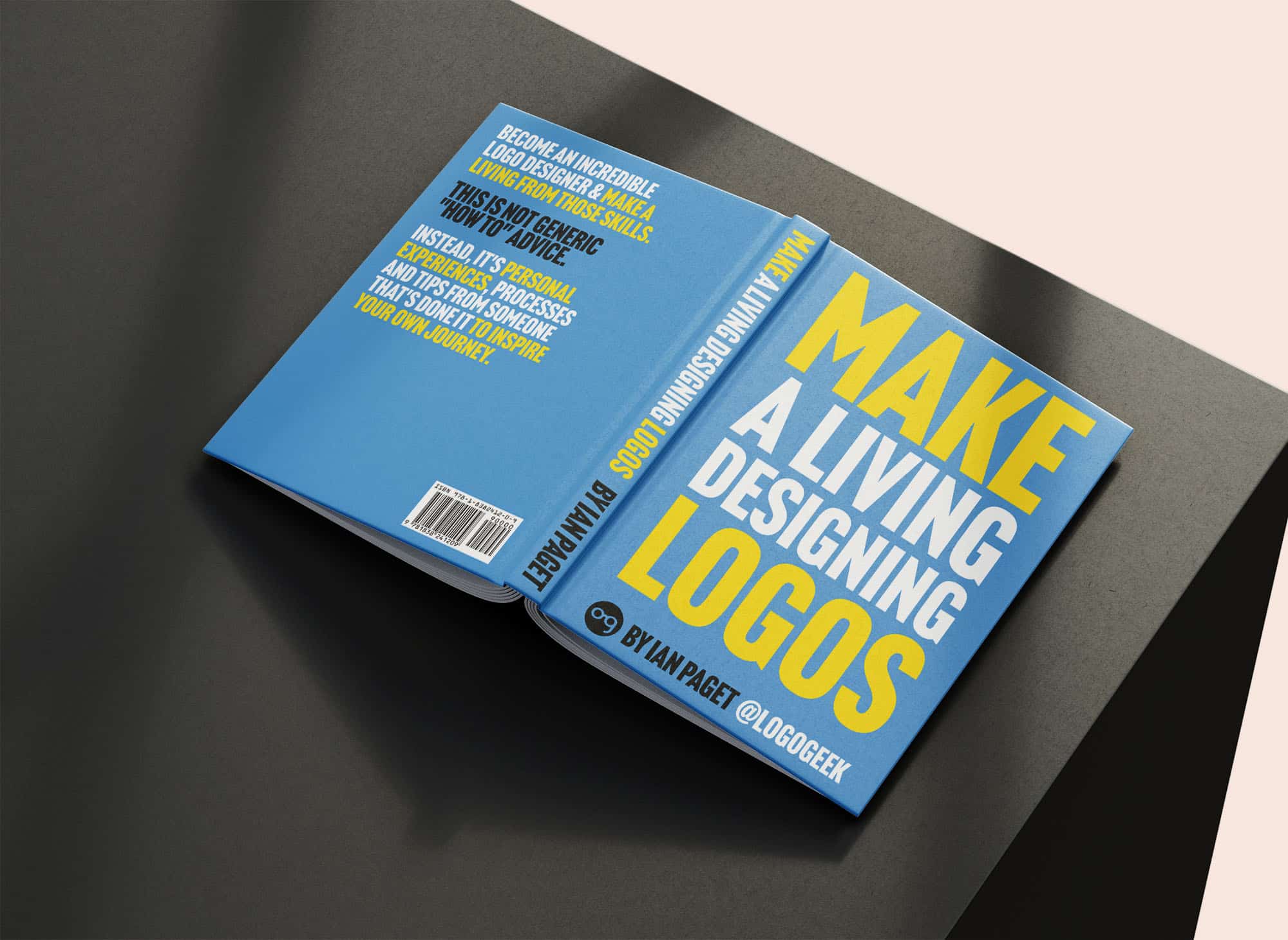
Done is Better Than Perfect
A key factor to finishing the book was developing the attitude that done is better than perfect.
I focused on just getting things done… if I needed an image, I just sat and got on with it… was it perfect? It didn’t need to be, as done is better than not done…
I just got it done.
I just cracked on.
If it worked, it stayed, it if could be better, I improved it.
Like with the writing, the design evolved in the same way.
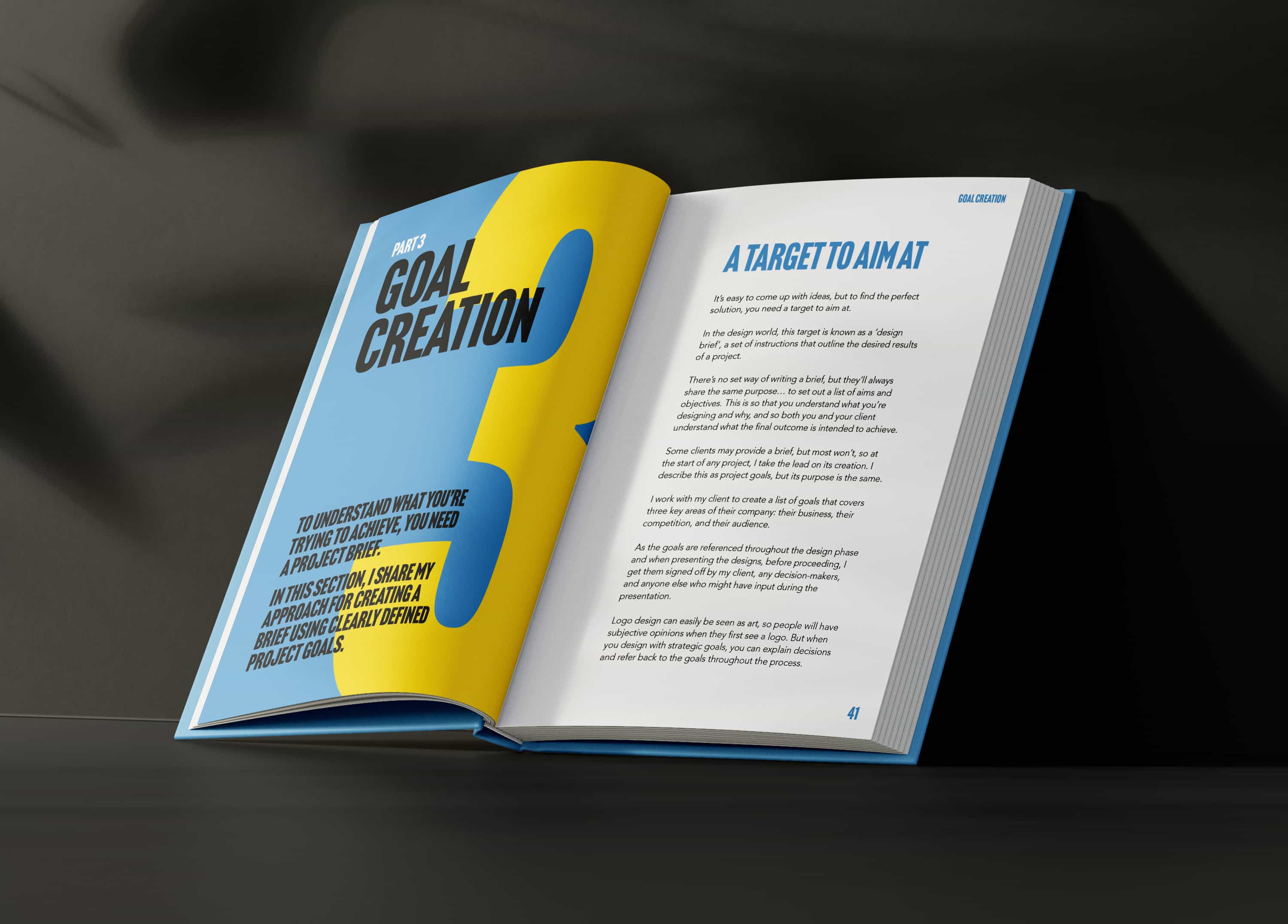
Although I once had an editor run through an early version of the content, by the time I had “finished” the book I had made significant changes, re-worked huge parts of it, and wrote new sections.
Ideally it needed proof reading again, but I was both excited and impatient, so rather than read through it for the 1000th time on my computer, I decided to get a copy printed instead.
Just before sending it for print, I ran it though Grammarly, which helped to improve things further, and then I sent it to print.
So exciting!
Getting Book Print Samples
Over the past couple of years I’ve done a lot of research into publishing methods, and discovered that it’s fairly easy to self publish a book using print on demand services.
There’s a few companies to choose from, but I opted to use either Amazon KDP, or Ingram Spark.
Before doing anything with my book, I did a test release of a Zine idea I had, but also parked for the same reason my book was on hold. I had originally planned to get a batch printed which I would sell through my website, but print on demand turned out to be an ideal solution.
A few small tweaks were needed, but I spent an afternoon finishing it off, rolled it out through KDP, and was blown away to see the Zine become a number 1 best selling design book on Amazon!
The concept was proven… print on demand worked, which escalated my excitement.
I ended up ordering a paperback sample of my book through Amazon KDP, and a hardback copy with a dust jacket through Ingram Spark.
I needed to wait a few weeks, but both samples landed at my door on the same day!!
Below is a video I recorded after returning home with my little one – I look awful, the lighting is poor, but I managed to capture the moment, and feel it worth sharing.
It was so exciting to see my book in reality!! Finally after all that hard work I could hold a copy in my hands and flick through it! It’s such a different experience to hold a book vs seeing it on your computer screen.
The print quality wasn’t too bad. Amazon KDP being slightly better than Ingram Spark.
I sat and read through the book once again over the following 2 days, noticed a few errors, corrected them, and then sent my sister an updated copy to proof-read. (Thank you Hayley!)
Launching a Kickstarter Campaign
The issue with print on demand is that you’re slightly limited in what you can do with the book, and there’s also a quality difference between properly published books too. Print on demand is also rather expensive… even pricing it at around £35, I would make only about £1 a copy, although I never did this for money anyway.
I had fulfilled my dream of writing a book, but it felt subpar in quality to most other design books I have on my shelf. Although it wasn’t too bad, I wanted it to be better.
So I decided to work out the numbers, and calculated that I could get a batch printed, the way I wanted, if around 100 people bought copies. So I quickly decided to launch a kickstarter campaign.
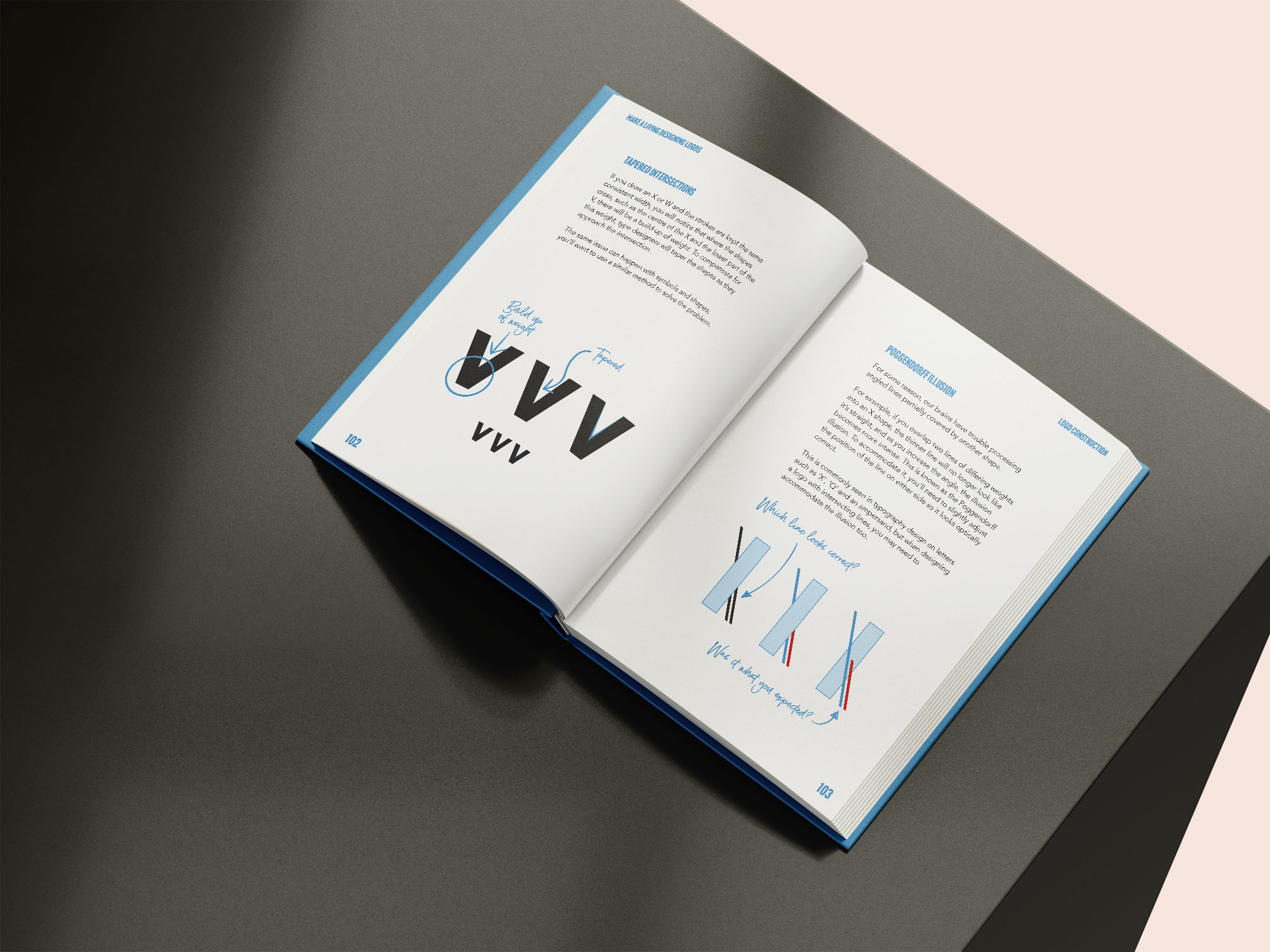
I care for my daughter half my time, on my own, so to make enough income I need to work extremely hard on the days I have to myself, which means I barely have time to breathe let alone launch a kickstarter campaign, but I committed to the idea.
I sat down at around 10pm one night, and by 2am I had finished all the copy, prepared images, and recorded a video… it wasn’t perfect, but it was done.
I set my goal to £1000, which would allow me to order a small batch and make it happen. With kickstarter it’s “all or nothing”, so I set what I felt was a realistic goal – any more would be a bonus.
The campaign hit that goal in just 12 hours.
Then reached 200% before the first day ended.
I couldn’t believe it! So much support! Wow!
And now I’m going to aim even higher.
The more funding I get, the better I can make the book, and as a thank you to each person who backs a physical copy, I will add more and more rewards as a thank you to those who have supported me!
If I can hit £5000 in funding, I will commit to gifting each and every person not only a deluxe version of the book, but also a Logo Geek Pin Badge, a Bookmark, and… an Audio Version of the book too, read by me!
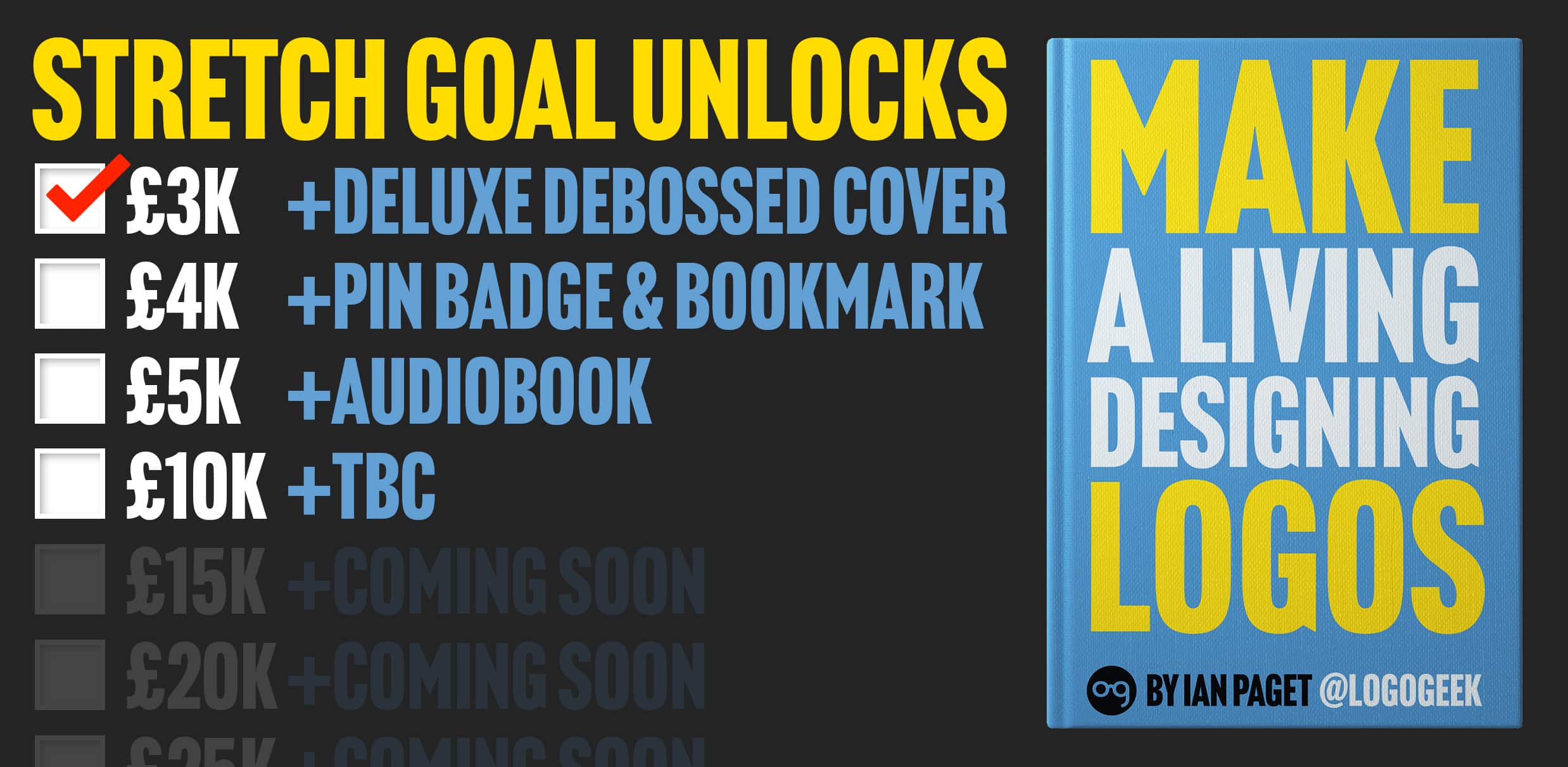
I’m so incredibly excited to have fulfilled my goal of writing a book, but I’m also incredibly proud to be able to give everyone who wants a copy, the best possible quality version too, so if you would like a copy, please support my Kickstarter Campaign.
I hope by sharing my journey, it will inspire you to work on a book of your own. It’s no small feat, and incredibly challenging, but seeing everything eventually come together makes it worth the hard work. It’s an extremely rewarding process.
